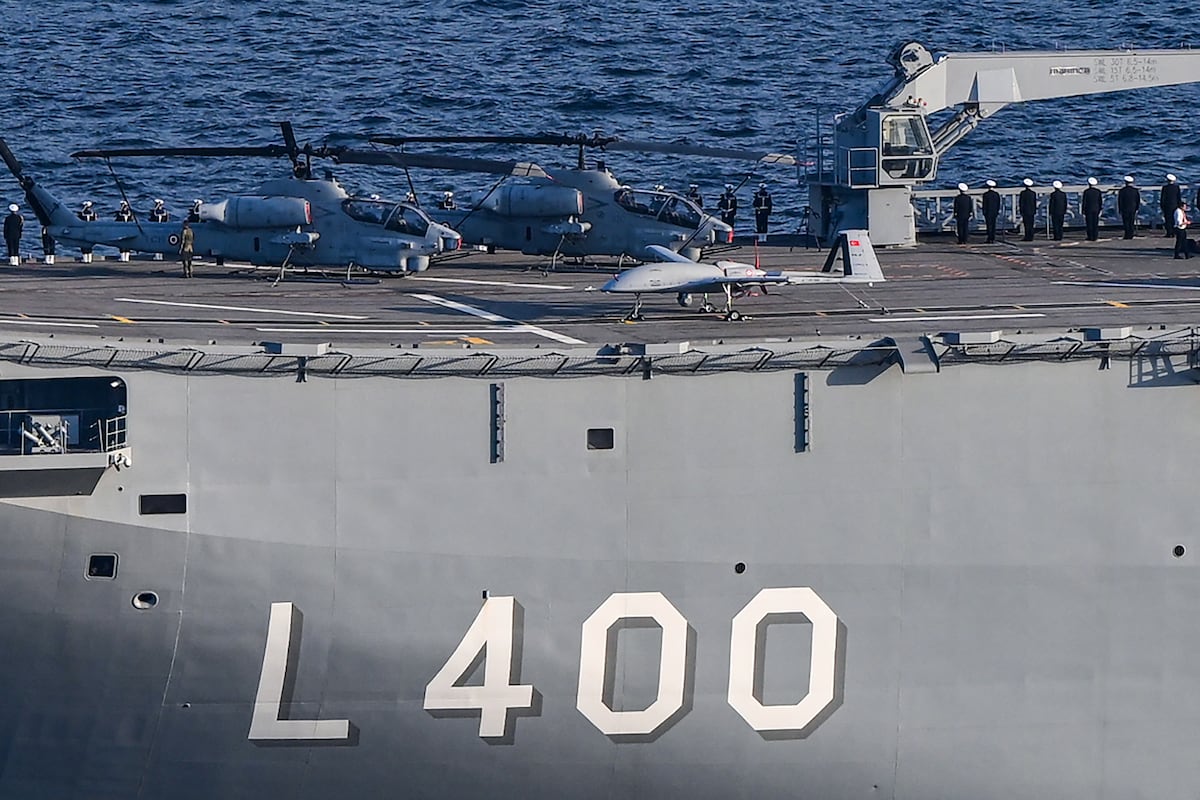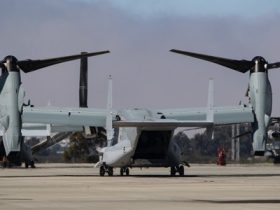Developing: The U.S. is sending a “small number” of additional troops to the Middle East, the Pentagon said in a short statement Monday, capping a weekend of Israeli-Hezbollah attacks that resulted in Lebanon’s largest one-day death toll in more than 30 years, with more than 550 people killed from Israeli strikes, according to the BBC.
Several U.S. warships departed their home port in Norfolk on Monday, including the USS Harry S. Truman aircraft carrier, two destroyers (DDG-55 and DDG-109) and a cruiser (CG-64).
First Ike, now Truman. Truman is set to join the USS Abraham Lincoln (out of San Diego), which was diverted from its Pacific mission to the Middle East to support Israel and U.S. forces nearby. It arrived last month to relieve the USS Theodore Roosevelt carrier (also from San Diego), which had been in the region since June. Roosevelt had replaced the Norfolk-based USS Dwight D. Eisenhower after its “unprecedented” eight-month mission that began immediately after Hamas’s Oct. 7 attacks that killed more than 1,000 Israelis and triggered supporting attacks by other militants in the region: the Iran-backed Houthis in Yemen, Iranian proxies in Iraq and eastern Syria, Hezbollah in Lebanon, and Iran itself in mid-April.
By the way: U.S. Navy replenishment oiler USNS Big Horn “ran aground” and is now “partially flooded off the coast of Oman,” according to industry watcher gCaptain. The situation now leaves the Lincoln carrier group “without its primary fuel source.”
Why it matters: “The Big Horn is the only oiler the Navy has in the Middle East,” gCaptain reports. See leaked video and photos seeming to illustrate a damaged rudder post as well as flooding in a mechanical space here and here, respectively.
Q. Does the Pentagon view the latest Israeli-Hezbollah exchanges as a spreading war? “No, I don’t think we’ve gotten to that point,” Press Secretary Air Force Maj. Gen. Pat Ryder told reporters Monday. “I mean, what you don’t see is multiple nations conducting operations against one another in the region and you know, in protracted, sustained operations,” Ryder explained, in what sounded just a bit like a straw-man rebuttal.
In video:
- 60 seconds of Israel’s Iron Dome intercepting missiles fired from Lebanon over Haifa on Monday, via the Associated Press.
- An Israeli strike on a purported Hezbollah weapons cache in southern Lebanon. The 3:50 mark of this video shows the immediate aftermath of an Israeli strike on an apparently ordinary home, which appears to have set off dozens of secondary explosions you can see in an extended clip here.
- Israeli PM Netanyahu’s warning: “Anyone who has a missile in their living room and a rocket in their garage will not have a home,” the prime minister said in a video posted to social media on Tuesday.
New today: Israel says it killed Hezbollah’s missile chief, a man named Ibrahim Muhammad al-Qubasi, in a targeted strike inside southern Beirut on Tuesday. “Al-Qubaysi was responsible for Hezbollah’s various missile units, including precision-guided missile units,” Israeli military spokesman Avichay Adraee said. “At the time of the raid, al-Qubaisi was accompanied by a number of senior Hezbollah missile system commanders,” he said without elaborating.
Welcome to this Tuesday edition of The D Brief, brought to you by Ben Watson with Bradley Peniston. Share your newsletter tips, reading recommendations, or feedback here. And if you’re not already subscribed, you can do that here. On this day in 1960, the U.S. launched the world’s first nuclear-powered aircraft carrier, the USS Enterprise.
Developing: U.S. and Iraqi officials appear to have agreed to a new timeline for the exit of most American forces, U.S. defense officials said over the weekend while being careful to avoid pretty much any specifics yet again.
“This month marks the 10th anniversary of the formation of the Global Coalition to Defeat ISIS, and after a decade of that coalition, and particularly the defeat of the territorial caliphate in Iraq and Syria, there have been discussions going on really over the last year about the evolution of the coalition and the mission,” a senior White House official told reporters Friday.
“We will be transitioning away from the coalition military mission in Iraq more to enduring bilateral security partnerships,” the official said while adding moments later, “we haven’t reached any final conclusions.”
U.S. defense officials are eyeing the end of 2026 to withdraw most coalition troops from Iraq, the Wall Street Journal reported Friday. But “Even after 2026, a small U.S. force is likely to remain in an advisory capacity and for logistical support for American troops based in Syria under a new bilateral security agreement with Iraq.” That agreement is expected to be announced as soon as this week, just ahead of the next counter-ISIS coalition meeting on September 30.
For what it’s worth: State Secretary Antony Blinken met with Iraqi PM Mohammed Shia’ Al Sudani Monday in New York on the sidelines of this week’s United Nations General Assembly. The two officials “reaffirmed our enduring bilateral security partnership to ensure regional stability, the defeat of ISIS, and ongoing efforts to advance a secure and sovereign Iraq,” according to Blinken’s spokesman.
Also from the region: The Houthi takeover of Yemen’s capital of Sana’a is now 10 years old, Mike Knights of the Washington Institute wrote last week in an extended note of caution. After enumerating policy stumbles from Washington and London, he warns, “Removing the Houthis from power will now require a new multi-year, or even multi-decade effort, including a probable return to war inside Yemen.” Read more, here.
Lastly: Dueling robot wingmen took the stage at last week’s AFA conference. But questions of survivability, missions, and sustainment of the Air Force’s planned collaborative combat aircraft still linger. Last week, Anduril Industries and General Atomics carefully wheeled their drones into a Maryland convention center for the Air & Space Forces Association’s annual Air, Space & Cyber conference, where industry executives and military officials eagerly discussed how these collaborative combat aircraft might shape the future of air superiority, what missions and roles they might fill, and how they will balance survivability and affordability. Defense One’s Audrey Decker reports.
Read the full article here








Leave a Reply